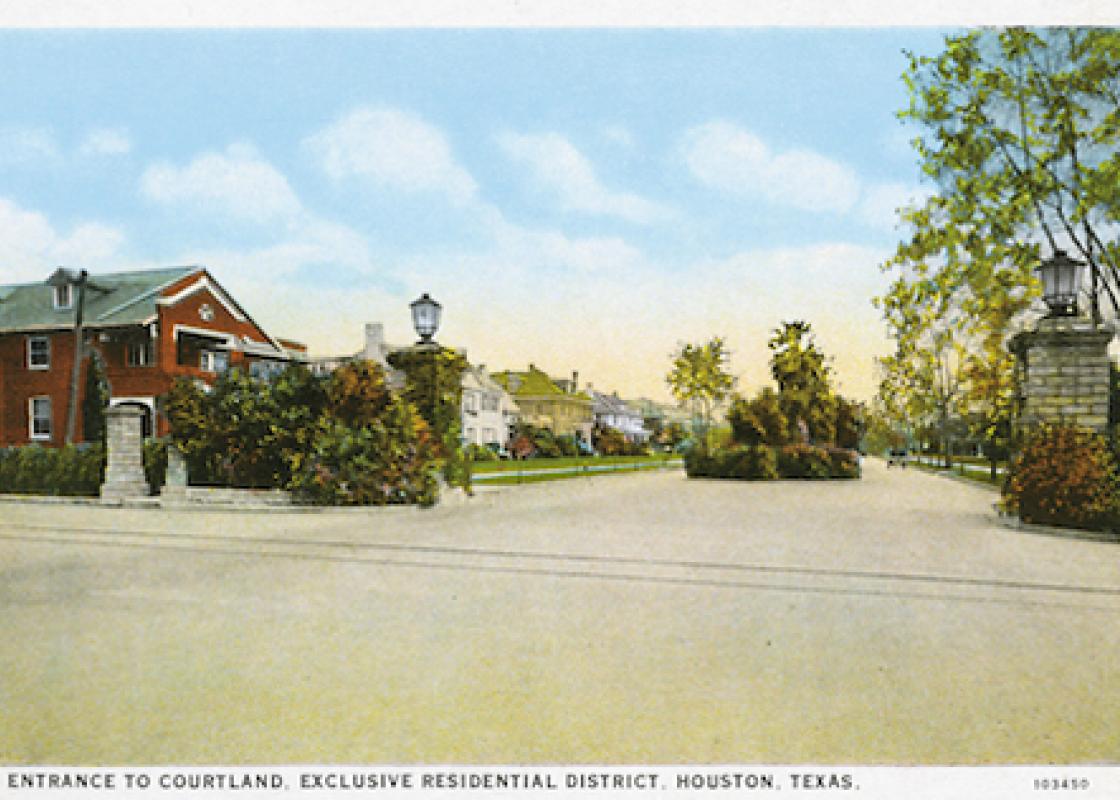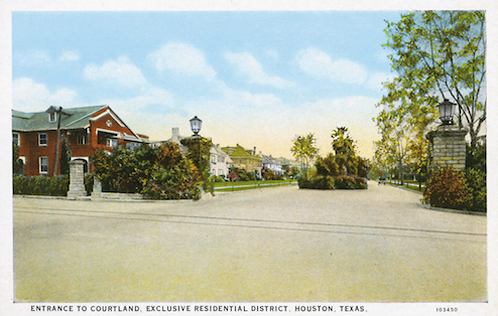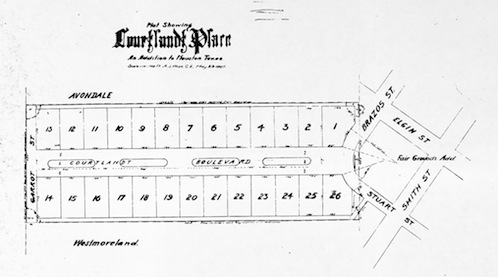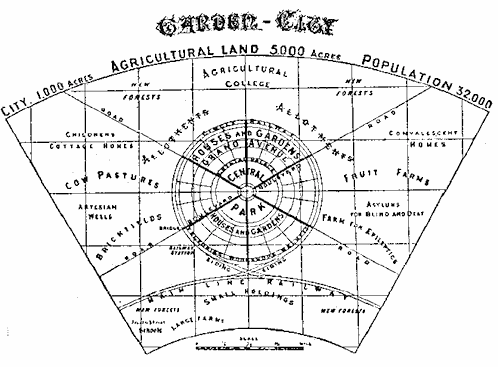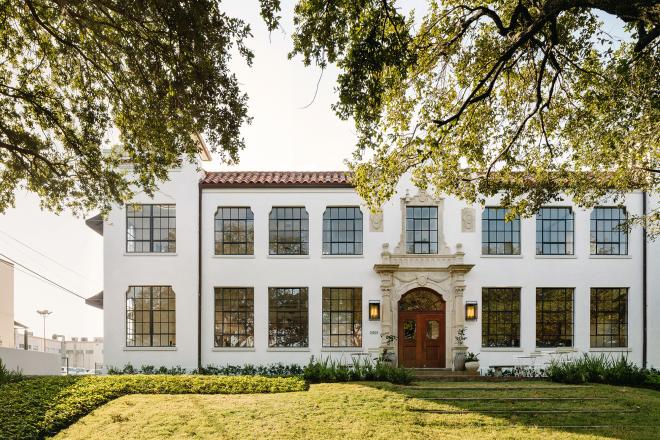Houston's original garden suburb, Courtland Place. Courtesy: The Monacelli Press.
It seems in Houston we are forever in search of ways to wrest control over the suburban landscape. So when a new 1,072-page tome from Yale School of Architecture Dean Robert A.M. Stern reintroduces a historic suburban model that encourages suburban retrofitting, it is tempting to assume that an answer to our anonymous sprawl is within reach. But Paradise Planned (The Monacelli Press, 2013) is first and foremost a reference book, a monograph that traces the history of the garden suburb movement and the urban planning ideas that drove its creation, listing and describing hundreds of individual garden suburb plans in the U.S. and across the world. The book champions the garden suburb model and urges contemporary planners to consider propagating the largely forgotten plan back into our fractured suburbs.
“Garden suburb” is a term that actually refers to a collection of different types of planning models; the authors --- Stern, David Fishman, and Jacob Tilove --- are quick to distinguish between individual labels like garden cities, garden villages, garden enclaves, industrial garden villages, and more. Almost all models resulted in bucolic communities that in many cases across the world still operate as highly successful and desirable neighborhoods. With tree-lined streets, thoughtful setbacks, gracious vernacular architecture, and studied links to commercial centers, garden suburbs are seductive plans that carefully weave landscape and architecture together. Seven of them were planned here in Houston and are still identifiable, perhaps most famously the tiny Courtland Place development from 1906 that sits politely on the west edge of Downtown (and as of 1969 sports an on-ramp to I-59 as its eastern border).
To bring this model into relevance, the authors close the book with a recommendation that the garden suburb model be included in our increasing effort to retrofit existing suburbs. They urge planners to abandon the urban fringe and instead focus on the existing city. Garden suburbs, they argue, could be distributed into underdeveloped, interstitial urban sites --- areas that constitute what they call the “middle city,” defined as the “deracinated zone between downtown and pre-automobile-era suburban development where neighborhoods have been largely abandoned.” Paradise Planned points to cities like Detroit, Cleveland, and St. Louis as good examples of places ripe for new garden suburbs.
While older Rust Belt cities like Detroit might have an abundance of these interstitial zones, most Sun Belt cities like Houston are too new and too decentralized to present this baseline condition. There wasn’t much “pre-automobile era” development in Houston, much less the entire West, making a significant swath of the country fall outside Stern’s argument. Ironically, these cities are the ones plagued most heavily by the suburban sprawl that Stern and his cohorts lament. Though garden suburbs are autonomous plans in design, they are systemic plans in operation. They rely heavily on active adjacent commercial and transportation infrastructure and cannot just be distributed to fill under- or undeveloped zones.
Paradise Planned absolutely belongs in the library of anyone interested in the general history of urban planning, but it falls short of offering much to our own condition. So, Houston developers and community activists: read (or, realistically, dip into) this book to educate yourself about a successful suburban model. The text is clear and well written and the pages and graphics beautifully designed. But then do the extra work to ask tough questions about where these lessons can really be applied in a city that operates so differently from the ones that originally supported this model. Does Houston even have a “middle city”? If not, where might these future garden suburbs go, and how might they connect to their surroundings?
More >>>
Read Martin C. Pedersen's review of Paradise Planned and interview with Stern on Metropolis.


